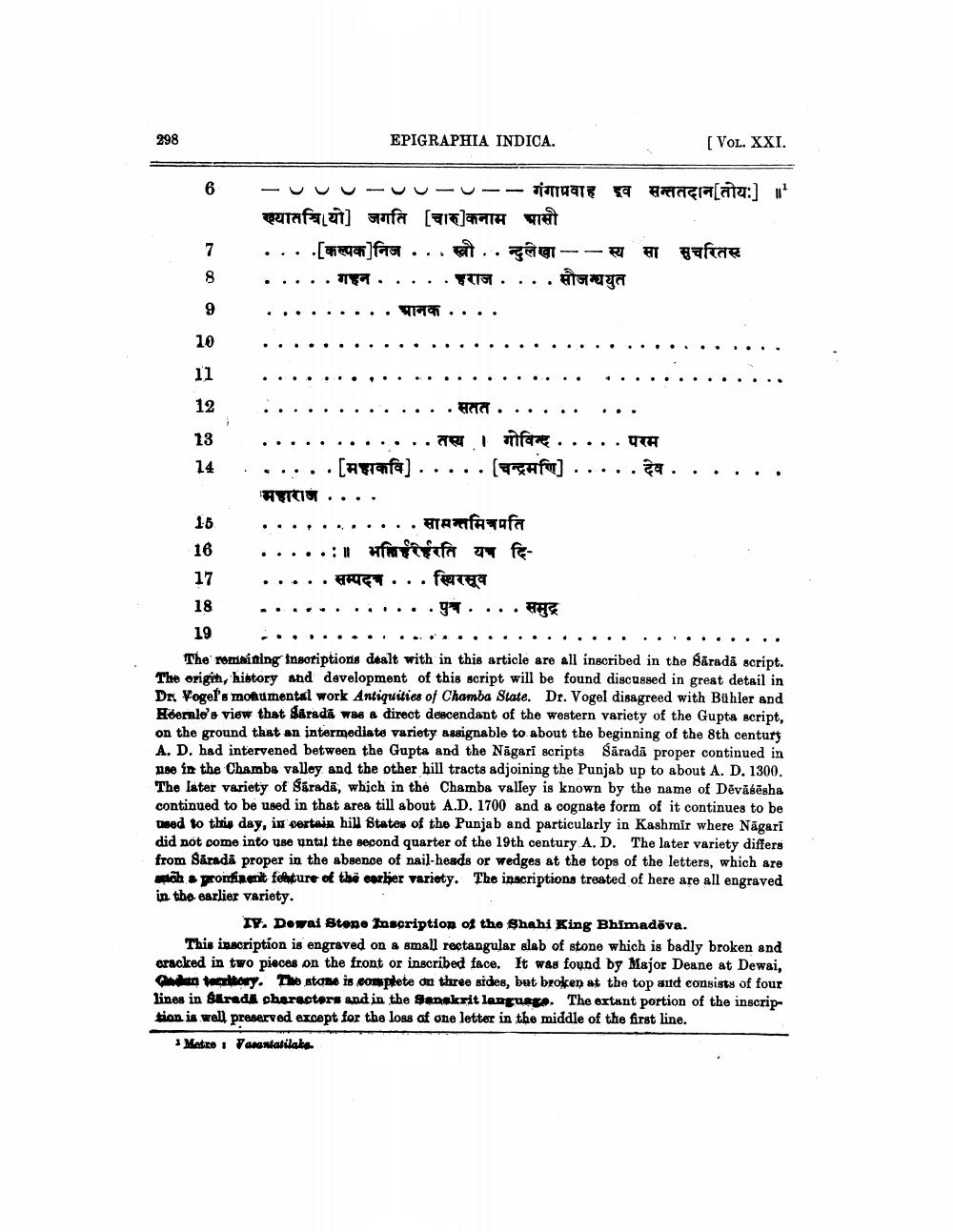________________
298
EPIGRAPHIA INDICA.
[VOL. XXI.
-uuuuu-u-- paig a Frigralata:) / ख्यातत्रियो] जगति [चारुकनाम पासी ....[**]far ... a.. ---R FT vafraie .....159..... .... T IYA ......... 977 ....
.
.
.
......
...................... ....
......... ...... ... ............. I mare ..... OTH
.... ( afa) .....( HT] ..... AYO.... ........... FAKATafa .....:1 w as fat av fe
... ... ferue ............ .... ES
19
The remaining Insoriptionis dealt with in this article are all inscribed in the Sarada script. The origih, history and development of this script will be found discussed in great detail in Dr. Vogel's monumental work Antiquities of Chamba State. Dr. Vogel disagreed with Bühler and Hoernle's view that Säradā was a direct descendant of the western variety of the Gupta script, on the ground that an intermediate variety assignable to about the beginning of the 8th century A. D. had intervened between the Gupta and the Nägari scripts Sāradă proper continued in nge in the Chamba valley and the other hill tracts adjoining the Punjab up to about A. D. 1300. The later variety of Sáradā, which in the Chamba valley is known by the name of Dévāsēsha continued to be used in that area till about A.D. 1700 and a cognate form of it continues to be tised to this day, in certain hill States of the Punjab and particularly in Kashmir where Nāgari did not come into use until the second quarter of the 19th century A. D. The later variety differs from Sārada proper in the absence of nail-heads or wedges at the tops of the letters, which are mach prominent feature of the cather variety. The inscriptions treated of here are all engraved in the earlier variety.
TY. Dewai Stone Inscription of the Shahi King Bhimadöva. This inscription is engraved on a small rectangular slab of stone which is badly broken and cracked in two pieces on the front or inscribed face. It was found by Major Deane at Dewai, Quan teattory. The stone is complete on three sides, but broken at the top and consists of four lines in Stral characters and in the Sanskrit languace. The extant portion of the inscription is well preserved except for the loss of one letter in the middle of the first line.
* Matre Parantatilake.




